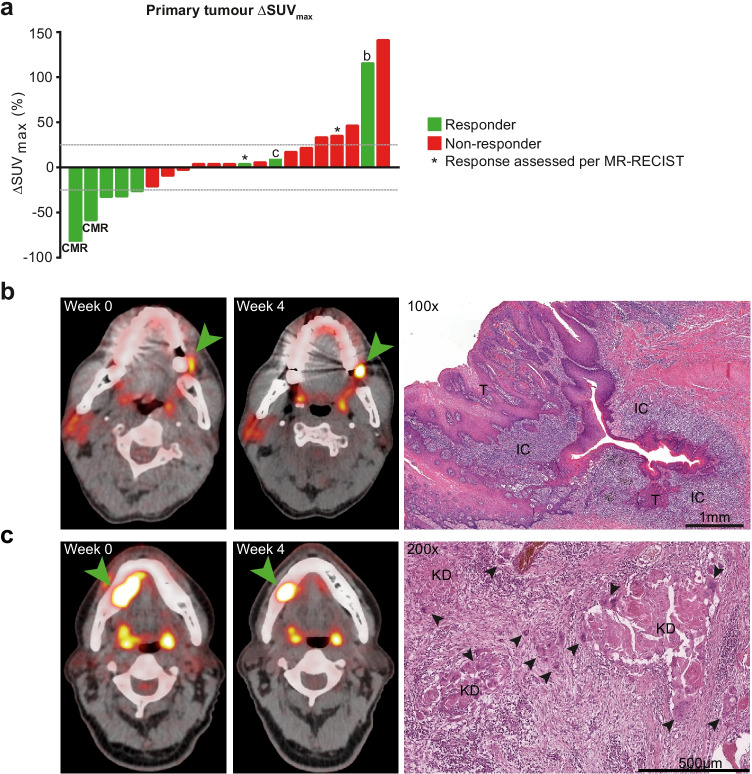Fig. 2.
SUVmax waterfall plot and two cases illustrating the EORTC criteria’s relative inaccuracy to determine pathologic response at the primary tumour site early upon neoadjuvant ICB in HNSCC. a Waterfall plot presenting the percentage change in primary tumour SUVmax from baseline to on-treatment per individual patient. Green bars represent pathological responders, red bars non-responders. Patients in whom response was assessed per MR-RECIST are marked with an asterisk. Dotted grey lines at 25% and − 25% represent the EORTC criteria for progressive metabolic disease (PMD) and partial metabolic response (PMR), respectively; patients in between both lines had stable metabolic disease SMD. Two patients visually had a complete metabolic response (marked CMR), though the SUVmax did not become 0. Patients marked with b and c are further illustrated under b and c, respectively. b A patient with clinically rT2N0 carcinoma of the left cheek mucosa demonstrated primary tumour PMD after 2 cycles of nivolumab + ipilimumab, with a SUVmax increase from 5.4 to 11.7 (117%). Evaluation of the surgically resected specimen (right panel) revealed a major (near-complete) pathological response, with some viable residual tumour (‘T’) surrounded by a dense infiltrate of immune cells (‘IC’). c A patient with cT4aN2b HNSCC of the floor of the mouth shows a SUVmax increase from 15.9 to 17.5 (10%). Correlative histopathology shows a partial pathological response: 69% of the histologically identifiable tumour bed is taken up by keratinous debris (KD) under apparent clearance of multinucleated giant cells and foamy macrophages (arrows)

